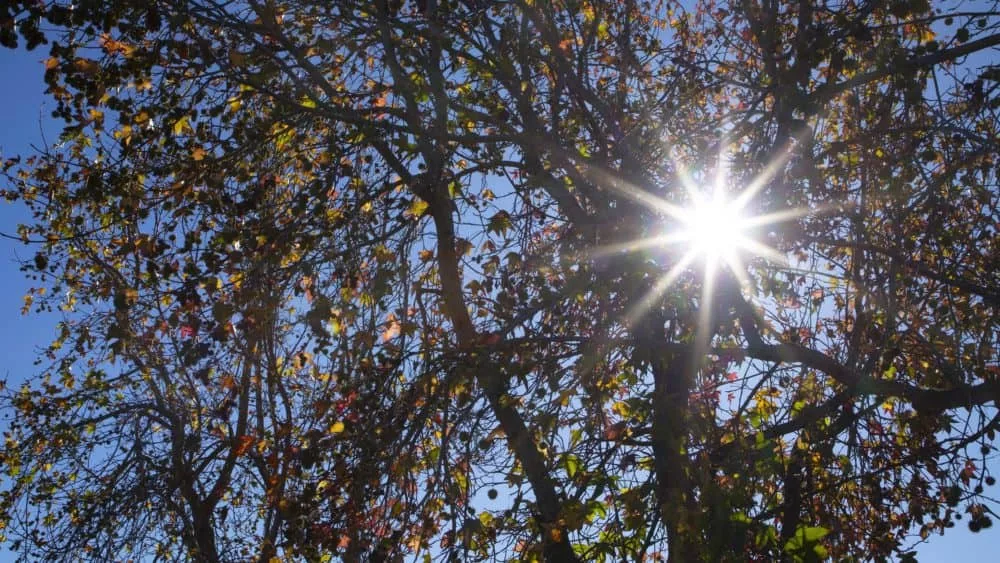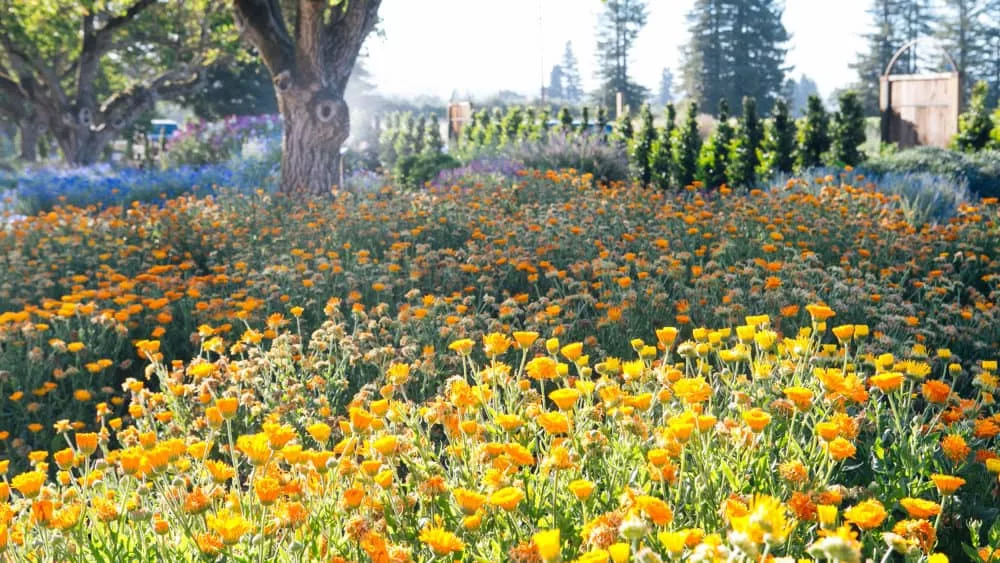There’s a lot of talk these days of “forest bathing” and the health benefits that come with being out in nature. Being around trees and plants gives us a sense of well-being. Even our backyard gardens give us feel-good rewards beyond the bounty we get from them. Three North Bay organizations are doing a lot to bring more plants and trees to our area and they’re bringing a sense of peacefulness along with that work.
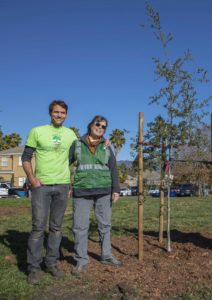
Throwing shade
ReLeaf Petaluma has only been around for three years, but in that time they have accomplished a lot—including planting 1,000 trees at Petaluma schools and parks, as well as winning grants and building relationships with the City of Petaluma and other nonprofit organizations.
ReLeaf Petaluma is an independent member of California ReLeaf—a statewide network of community groups working to green cities throughout the Golden State—and they’ve received three Cal Fire-supported grants totaling $182,000. What’s more, they worked with the City of Petaluma to get a $226,000 Urban Forest Management grant, of which ReLeaf received 10% to help with tree planting. They also worked with the city and won a $20,000 Healthy Babies Initiative Grant from the Healthy Babies Bright Futures Project, supported by the national Mayors Innovation Project.
ReLeaf Petaluma also supported the city in its recent application for a “million-dollar grant” from the U.S. Forest Service, as part of the Inflation Reduction Act.
ReLeaf Petaluma Advisory Board Chair Wendy Jacobs says that winning the million-dollar grant was a real milestone achievement for both the city and ReLeaf.
The new grant will support a five-year plan with several programs, including the planting of around 500 residential trees. About half of those will go into low-income residential neighborhoods that happen to be in areas known as “heat islands” due to their lack of shade trees and abundance of concrete and cement.
“We will advise the residents, determine the best native species for the sites, obtain and plant [the trees] and coach the owners on how to take care of them,” Jacobs says. “That’ll start in a small way this year. It’ll be much bigger next winter. You know, we tend to do most of our planting work in the November-to-March time frame to give the trees the best start.”
Jacobs says that the Inflation Reduction Act grant will help them plant around 2,000 trees total and they’ll continue planting trees in parks and move into planting in some of the open space areas in Petaluma. “We will want to be careful not to disrupt grassland ecosystems, for instance, in some of the open spaces,” she says. “But there are also many areas that are in open spaces and, of course, definitely in the parks that will benefit from the shade and that are more inclined toward a forest ecosystem anyway.”
Partners like Point Blue Conservation Science will be helping them plant another 500. That number was part of the match that was provided in order to win the million-dollar grant.
“Point Blue will be planting a quarter mile of Wilson Creek just outside the town,” Jacobs says. “It’s a private ranch property. We’re really excited about that as an introduction to some of our farm and ranch properties of what they can do when they have a creek on their property to help control erosion and provide cooling and environmental benefits.”
ReLeaf will also be gathering acorns, planting and caring for them. Jacobs says they have designated some wide-open areas that really could benefit from shade.
“An example is next to the airport and running along that east side connector trail all the way up past Santa Rosa Junior College and up to Kenilworth Junior High,” she says. “It’s a long trail that has sort of open land on either side, where we plan to be marking it off in segments and planting acorns and servicing them with water and predator protection while they get started. So that’ll be really interesting.”
Besides adding 1,000 trees to the local landscape, Jacobs says she thinks one of the biggest benefits of their work so far has been the morale of both their volunteers and the people that are out enjoying the parks. “The people we meet when we’re out working are just delighted and they feel like something good is happening in their town,” she says.
“The folks living near McDowell Park are particularly appreciative because it’s gone from a park with almost no trees or some big trees that were dying to a park with 50 some trees there and another 38 in the school next door,” Jacobs says. “All together it’s really changed the feel of the area. I mean, trees really impart a sense of well-being, and they’re a signal as well that it’s an urban area that’s cared for. So, yeah, people tell us they’re happy.”
Adds Jacobs: “It’s hard to forget how beautiful they are and how much they make us relax.”
Jacobs believes part of the allure is the abundance of life that trees bring.

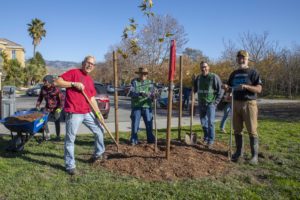
“From the birds to the dragon flies and other pollinators and the tree frogs and even the mammals [feed] on the insects that drop off the trees,” Jacobs says. “They are there because we’re working with local native trees and they’re going to be increasingly vibrant with life.”
That sense of well-being comes from being part of nature, she says. “It’s easy to forget that, but this is a way that we can experience nature in our daily life.”
The trees in Wiseman Park are also helping with pollution in the area. The park sits near an airport and Jacobs says after the planting they realized the trees would provide a screen for the residents living there. “It will help to pick up some of that jet pollution, that air pollution,” she says. “The trees are a particularly good idea along there.”
Another important environmental benefit of the trees will be cooling the area on hot summer days. They planted their first batch of trees two years ago along the front of Petaluma High School. Those trees have grown quickly and are now providing shade to the area.
ReLeaf Petaluma is working with volunteers of all ages and they’ve been focusing on attracting youth. They had two youth planting days in November and December that were well attended.
“They just had a ball working together,” Jacobs says of the younger volunteers. “I also see with the youth that they are really happy and upbeat about having an opportunity to do something about climate change in their own backyard. It gives them a sense of accomplishment and a sense of being able to influence something important.”
Some of ReLeaf’s young interns are recruited by partner organization Petaluma People Services Center. They are from target populations with special challenges in their lives and work with volunteer mentors, an arborist and a high school physics teacher. The mentors teach them about trees and how to plant them; at the plantings they all sit and eat lunch together while a speaker gives a talk about green career opportunities.
“They’re very quiet,” Jacobs says. “But when they get out with their Petaluma People Services counselors and their parents, they are teaching and lecturing about the environment and passing along the information they’ve picked up.”
She thinks it gives the young people hope. “And we give them connections that they might never have formed.”
ReLeaf also partners with Daily Acts, a Petaluma nonprofit focused on land resilience. This past year they planted trees at nearby McKinley School and Daily Acts installed a school garden with a large rainwater catchment system and several hundred native plants.
Into the re-wild
Trathen Heckman, founder and executive director of Daily Acts, says there are many benefits to projects like this that the community gets involved with. “People really need inspiring, empowering examples and stories and so we [provide] that,” Heckman says. “When you focus on what you can influence, your influence grows.”
Heckman cites the McKinley School garden and its rain harvesting as a prime example.
“It’s putting [water] in tanks. It’s sinking into the earth. It’s feeding plants,” he says. “The amazing thing about plants [is] they are actually cleaning the air for us and they’re doing a ton of other things—holding water in the ground, helping sequester carbon, which cools our climate.”
Heckman believes that in the midst of so many environmental crises that it’s important to focus on the positive. “Positive solutions, positive stories, connection to community, connection to nature improves our physical, mental, emotional health and well-being,” he says. “It gives us the energy to take positive action and build more inspiration, more empowerment.”
Heckman wrote Take Heart, Take Action: The Transformative Power of Small Acts, Groups and Gardens and in it he offers examples of the power of action.
“When you focus on connecting to nature and taking positive action, that can grow and have larger influences, from your home to your neighborhood to your city and beyond,” Heckman says. “Focusing on the power of small actions—our small gardens, our small solutions, planting trees—that kind of thing can actually have a big impact through time.”
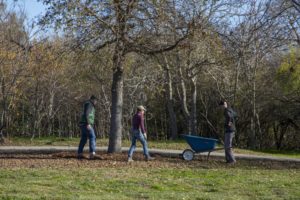
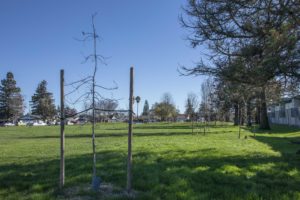
Heckman did an analysis of carbon sequestration—the process of capturing and storing carbon dioxide—on his own household garden and was surprised by the results. “Our garden is maybe 2,000 square feet, has quite a few trees and food,” he says. “It has rainwater catchment, gray water and chickens, and it’s growing food and habitat. Right now, there’s six different types of citrus out there, and there’s still apples on our tree, and the garlic is growing and the onions.”
Heckman found that the garden sequesters two tons of carbon, which is the same amount of carbon that can be sequestered by 20 mature oak trees. “Trees are hugely important, but you can’t fit 20 mature oak trees on a little lot,” he says. “Yet our little lot is sequestering the same amount of carbon.”
Across the street is a 3,000-square-foot garden at the Cavanagh Recreation Center at 426 Eighth St. It has two rainwater catchment systems and provides food, medicine and native habitat. It sequesters one ton of carbon a year.
“So that’s two gardens with hundreds of types of food and medicinal plants and seven rainwater catchment systems and they’re sequestering three tons of carbon a year,” Heckman says.
“You’re producing oxygen, cleaning the air, creating food, creating habitat and getting the mental and physical health benefits from being in nature,” Heckman says. “There’s a lot of documented physical, mental and emotional health benefits of being in nature, but we could be growing more nature in our neighborhoods, in our households, too.”
Heckman says visiting parks is great, but not enough.
“I love going in the mountains and going to Helen Putnam [Regional] Park and those sorts of things,” he says. “But we have to rewild our neighborhoods too.”
Daily Acts has many opportunities available that locals can participate in like an upcoming program offering free landscape assessments and a mid-March Native Tree Care Workshop.
Restoring nature, restoring health
Another local organization that helps locals care for their properties and encourages native plants and trees is the Sonoma Ecology Center near Glen Ellen. The ecology center does a lot of restoration work on both public and private lands.
Lauren Claussen is the restoration program manager at SEC and she says their projects are setting up the region for long-term sustainability with climate and wildfire resilience.
“We’re doing really important work to enhance and improve ecological processes in the region,” Claussen says. “But equally important, we focus on educating and connecting with the public—whether that’s private landowners, collaborations with Sonoma County entities, city entities and different people or organizations like that.”
Claussen says they’re doing a lot of work to restore forests and streams impacted by wildfires and erosion. “We’re also doing a ton of vegetation management, which as we all know from the many years of fires it’s really important to be managing forests sustainably and encouraging long-term forest health,” she says.
They promote planting native plants, grasses, herbs, shrubs and trees in both wildland and urban areas.
One way they encourage local plants and trees is by collecting acorns or seeds and growing them in their native plant nursery down at the Sonoma Garden Park, at 19996 Seventh St. in Sonoma. “We try to collect the material from the region and then replant it back into those areas.”
There are many reasons why an area might need restoration. “It could be that a fire has gone through and taken out or scorched all the native trees,” Claussen says. “Maybe only bays are growing now, and we want to bring that area back into balance, where it’s not just a highly flammable bay forest. So we’ll do some thinning and things like that.”
Claussen says that with the changing climate the stronger storms and atmospheric rivers can cause serious erosion. “We try to come from an ecological and minimal-input approach to reducing erosion through doing plantings of native plants,” she says. “Native grasses can help stabilize the soil over the long term.”
Another kind of restoration work is needed when fire hasn’t come through an area in a long time—resulting in an abundance of shrubs and lower growth that can provide fuel for wildfires. “We’ve had many decades of a hands-off approach to management and we’re realizing that’s maybe not the answer,” she says.
“In the absence of a fire coming through and taking out all the shrubs and [underbrush], we go in and we do that,” Claussen says. She says they can create shaded fuel breaks, conduct hand thinning, build burn piles and over-all provide managed stewardship of the land.
“Restoration can encompass many different things—actual disturbed landscapes and then also areas where you want to have a little bit more management,” Claussen says.
Many properties in Sonoma Valley have been affected by fire, and Claussen says SEC has helped numerous private landowners over the last five to 10 years manage their property afterward. That work involves thinning, cutting down dead trees and shrubs and helping do burn piles on the properties.
“In many instances we will encourage planting native species, and part of that is planting trees,” Claussen says. “[Sometimes] after a fire, we don’t even have to plant a tree because of the acorn sprouts. But we definitely encourage a healthy number of trees and encourage that new tree growth.”
In 2022 and 2023, the ecology center worked with around 20 different landowners across approximately 200 acres of private land, says Claussen. During that time, SEC also worked on more than 150 acres of public lands in Sonoma and Napa counties, including state, county and city properties.
They’ve also worked extensively at the Sonoma Developmental Center, planting trees and conducting invasive species removal, and offered vegetation management at the Montini Preserve down in Sonoma.
“At the ecology center, we’re focused on looking at the big picture,” Claussen says. “We’re trying to look at the [Sonoma Valley] as a whole and see how we can make all of these systems work better.”
Claussen says when she’s out working in areas like the Montini Preserve, she’s observed people enjoying the natural setting. “We’re constantly talking to people that go walking through there,” she says. “People really have a sense of place and a feel of connection to the outdoors in nature.”
To her, the link between a healthy environment and a healthy community is clear.
“By promoting a healthy landscape and talking about it and encouraging people to participate in it—whether it’s volunteering for a nonprofit or just going for a hike—I think that all can improve human health.”


